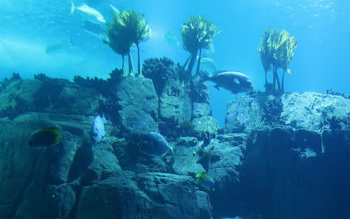Mysterious Underwater City Found: Ancient Architecture Superior to Egypt’s Pyramids!
Archaeologists exploring China’s Fuxian Lake, Yunnan Province, unveiled the remnants of an enormous ancient architectural complex in a dig initiated on June 13, 2006. The sophistication of these underwater ruins surpasses even that of Egypt’s pyramids.

During the expedition, the team found intricately carved stones strategically placed, suggesting the creations of advanced ancient civilizations. The discovery challenges previously held perspectives about the region’s history.
Historically, a city named Yuyuan existed in the Fuxian Lake vicinity during the Western Han Dynasty (206 BC – 24 AD), but it disappeared from records during the Sui and Tang dynasties (589-907 AD). Local folklore suggests Yuyuan and its residents sunk into Fuxian Lake.
Initially, the ruins were speculated to be remnants of Yuyuan or the ancient Dian kingdom’s capital. But further exploration disproved this, as the underwater structures were made of stone, while Dian and Yuyuan were primarily wooden and clay constructions.
Sonar examinations revealed the under-lake architectural site spans about 2.4 square kilometers, exceeding the size of the Han Dynasty’s capital. Amidst the ruins is a pyramid-like structure adorned with intricate carvings, seemingly superior to Egyptian pyramids.
One stone carving particularly intriguing depicts circles resembling the Sun, a rarity in intaglio carvings. Patterns suggesting masks, binary code (“0” and “1”), neat holes, and primitive drawings were also found, including symbols similar to the Roman numeral “1” and the English letter “y”.















